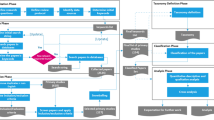Abstract
An intelligent verification platform based on a structured analysis model is presented. Using an abstract model mechanism with specific signal interfaces for user callback, the unified structured analysis data, shared by the electronic system level design, functional verification, and performance evaluation, enables efficient management review, auto-generation of code, and modeling in the transaction level. We introduce the class tree, flow parameter diagram, structured flow chart, and event-driven finite state machine as structured analysis models. As a sand table to carry maps from different perspectives and levels via an engine, this highly reusable platform provides the mapping topology to search for unintended consequences and the graph theory for comprehensive coverage and smart test cases. Experimental results show that the engine generates efficient test sequences, with a sharp increase in coverage for the same vector count compared with a random test.
Similar content being viewed by others
References
Hu Z Y, Zhao Y, Wang X A, et al. Theory and verification of operator design methodology. Sci China Inf Sci, 2012, 55: 480–490
Gluska A, Libis L. Shortening the verification cycle with synthesizable abstract models. In: 46th ACM/IEEE Design Automation Conference, San Francisco, 2009. 454–459
Saponara S, Fanucci L, Coppola M. Design and coverage-driven verification of a novel network-interface IP macrocell for network-on-chip interconnects. Microprocess Microsyst, 2011, 35: 579–592
Naveh Y, Rimon M, Jaeger I, et al. Constraint-based random stimuli generation for hardware verification. AI Mag, 2007, 28: 13–30
Gharehbaghi A M, Yaran B H, Hessabi S, et al. An assertion-based verification methodology for system-level design. Comput Electron Eng, 2007, 33: 269–284
Kong L, Wu W C, He Yong, et al. Design of SoC verification platform based on VMM methodology. In: IEEE 8th International Conference on ASIC, Changsha, 2009. 1272–1275
Feng Y, Chen L. Constructucting method of VIP and VMM based SoC verification environment. In: 2nd International Conference on Mechanic Automation and Control Engineering (MACE), Mongolia, 2011. 3965–3968
Yun Y N, Kim J B, Kim N D, et al. Beyond UVM for practical SoC verification. In: International SoC Design Conference (ISOCC), Jeju, 2011. 158–162
Li H W, Min Y H, Li Z C. Clustering of behavioral phases in FSMs and its applications to VLSI test. Sci China Ser F-Inf Sci, 2002, 45: 462–478
Habibi A, Tahar S. Design and verification of SystemC transaction-level models. IEEE Trans Very Large Scale Integr (VLSI) Syst, 2006, 14: 57–68
Yu J S, Li T, Tan Q P. The use of UML sequence diagram for system-on-chip system level transaction-based functional verification. In: The 6th World Congress on Intelligent Control and Automation, Dalian, 2006. 6173–6177
Suhaib S, Mathaikutty D, Shukla S. System level design methodology for system on chips using multi-threaded graphs. In: IEEE International SOC Conference, Herndon, 2005. 133–136
Rimon M, Lichtenstein Y, Adir A, et al. Addressing test generation challenges for configurable processor verification. In: 11th Annual IEEE International High-Level Design Validation and Test Workshop, Monterey, 2006. 95–101
Sun Z, Wang Y. A high efficient method to generate the verification vector of ICs (in Chinese). Acta Sci Natur Univ Pekinensis, 2007, 43: 92–95
Janick B, Eduard C, Alan H, et al. Verification Methodology Manual for SystemVerilog. New York: Springer, 2006. 105
Jenihhin M, Raik J, Chepurov A, et al. High-level decision diagrams based coverage metrics for verification and test. In: 10th Latin American Test Workshop (LATW), Rio de Janeiro, 2009. 1–6
Author information
Authors and Affiliations
Corresponding author
Rights and permissions
About this article
Cite this article
Xie, Z., Wang, X., Lian, Z. et al. A novel intelligent verification platform based on a structured analysis model. Sci. China Inf. Sci. 56, 1–14 (2013). https://doi.org/10.1007/s11432-013-4817-6
Received:
Accepted:
Published:
Issue Date:
DOI: https://doi.org/10.1007/s11432-013-4817-6




